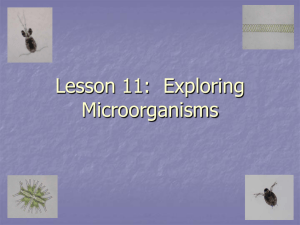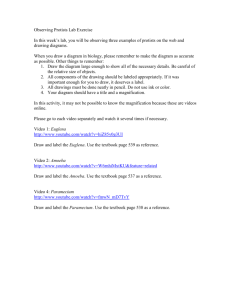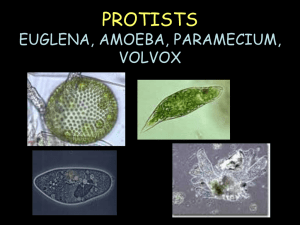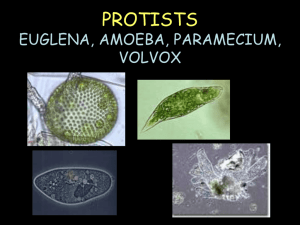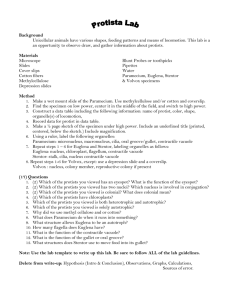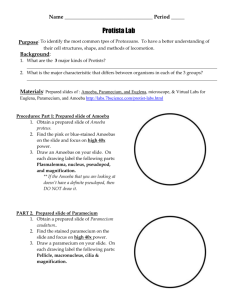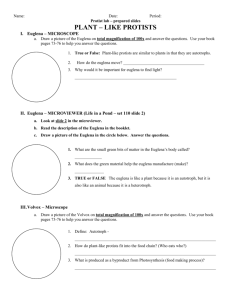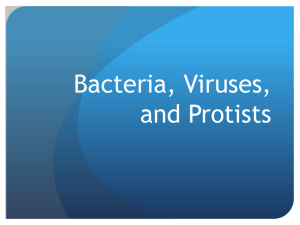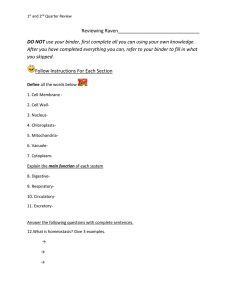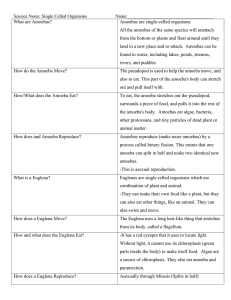Lesson 44- Protists (pg. 290)
advertisement
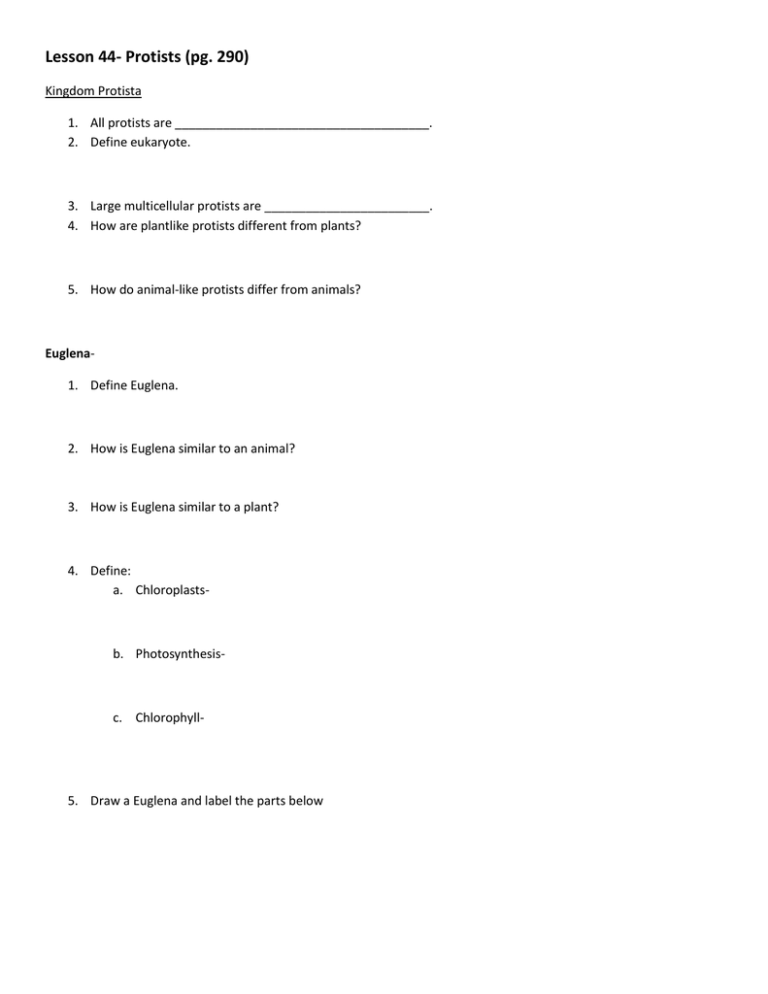
Lesson 44- Protists (pg. 290) Kingdom Protista 1. All protists are _____________________________________. 2. Define eukaryote. 3. Large multicellular protists are ________________________. 4. How are plantlike protists different from plants? 5. How do animal-like protists differ from animals? Euglena1. Define Euglena. 2. How is Euglena similar to an animal? 3. How is Euglena similar to a plant? 4. Define: a. Chloroplasts- b. Photosynthesis- c. Chlorophyll- 5. Draw a Euglena and label the parts below 6. What is the purpose of the eyespot on a Euglena? 7. What is a flagellum? 8. What are the two ways that Euglena obtain nutrients? 1. 2. Amoeba1. Describe the Amoeba. 2. Draw the Amoeba and label the parts below. 3. Define pseudopod. 4. How does Amoeba use the pseudopod? 5. Explain how the Amoeba uses the pseudopod to capture other protists. Paramecium1. Define Paramecium. 2. What is the Paramecium covered in? 3. How do the cilia work and what are they used for? 4. How does the Paramecium feed? 5. Draw the Paramecium and label the parts below. 6. How does a Paramecium use the contractile vacuole? 7. Why can living in fresh water be dangerous for a Paramecium? 8. What is the purpose of each of the two nuclei in a Paramecium? Volvox1. Define a Volvox. 2. How does a Volvox live? 3. Describe the colony of Volvox. 4. Draw the Volvox colony below. 5. Rewrite the table on page 293 below. Protist Structure Locomotion Food Source Specialized Cell Structures Write the 4 questions on page 294 below. Under the question write out your complete answer to the question.
